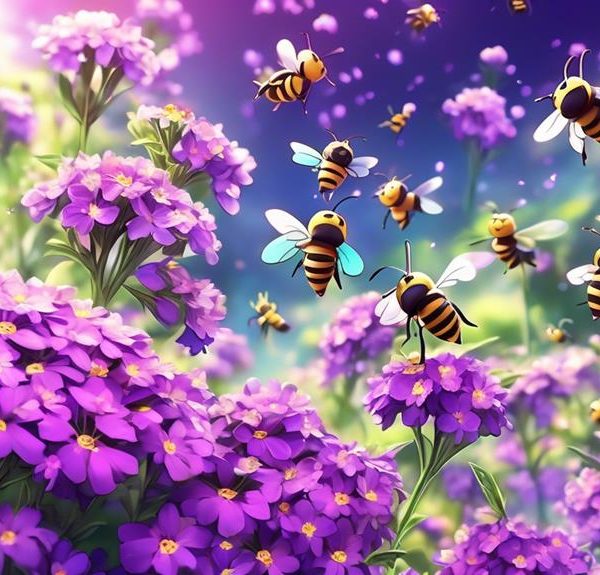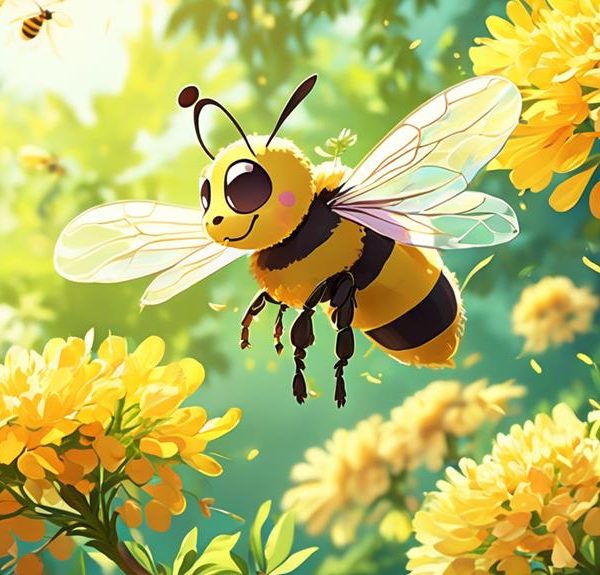Learn about the surprisingly intricate relationship between bees and buttercups, and unlock the secrets of nature's fascinating pollination process.
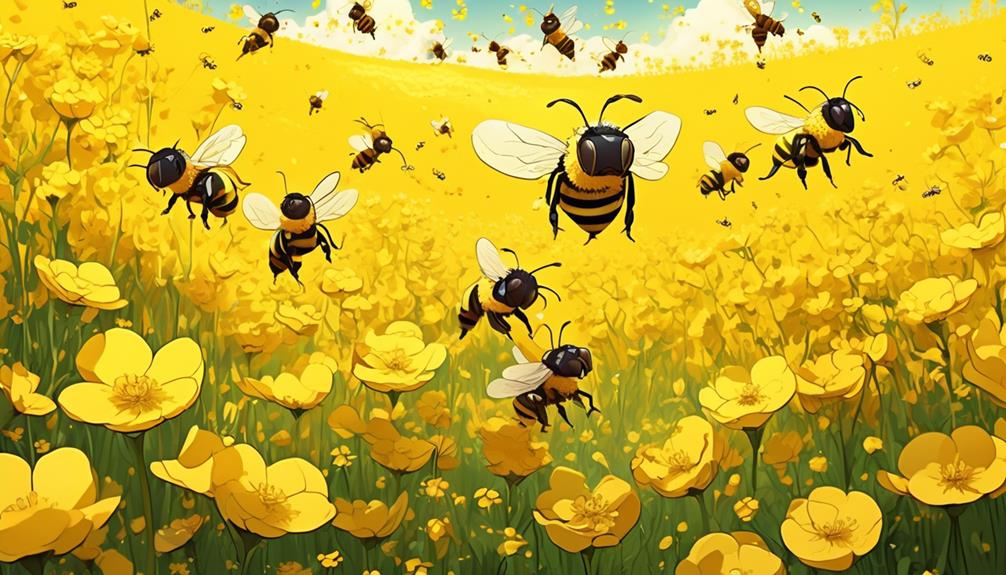
Do Bees Like Buttercups?
Ever wondered about the flower preferences of bees, specifically their views on buttercups? As you immerse yourself in the world of pollinators and their favored flora, it's interesting to note that bees, renowned for their essential role in pollination, can indeed have preferences.
While daisies and lavenders are commonly associated with these buzzing creatures, the allure of the buttercup is a topic less explored. Yet, the answer to whether bees are attracted to these bright yellow flowers can offer intriguing insights into the complexity of nature's symbiotic relationships.
So, why not embark on this journey to uncover the secrets of these tiny pollinators and their potential love for buttercups?
Key Takeaways
- Bees are attracted to buttercups due to their bright yellow color, saucer-like shape, sweet fragrance, and rich nectar production.
- Buttercups play a crucial role in the pollination process, as bees inadvertently transfer pollen from buttercups to other flowers, enabling cross-pollination and genetic diversity.
- The relationship between bees and buttercups is an example of mutualism, benefiting both parties by providing essential nutrition and aiding in survival.
- Preserving the relationship between bees and buttercups is vital for maintaining biodiversity and the delicate balance of the larger ecological system.
Understanding Bee's Flower Preferences
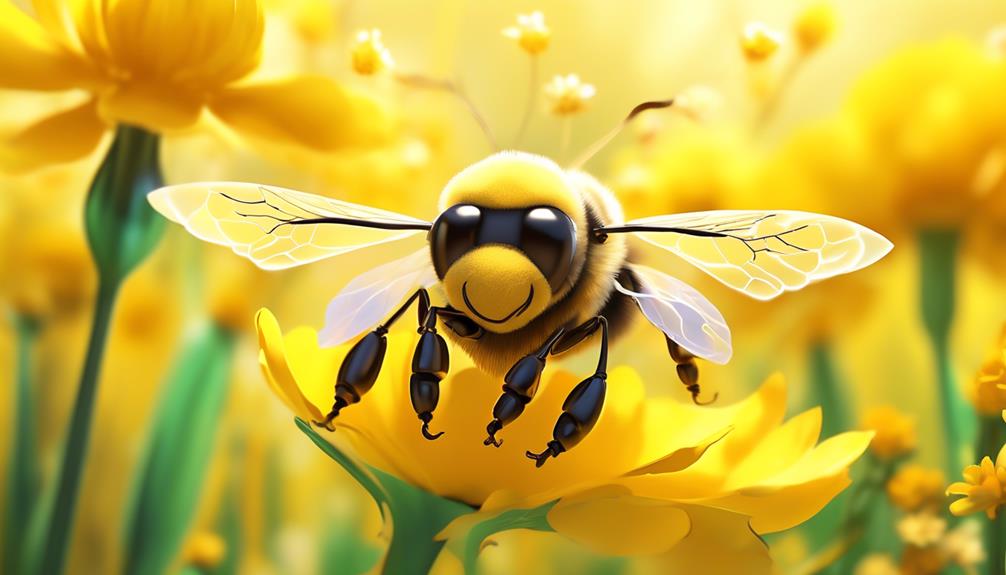
To truly grasp why bees might favor buttercups, you need to delve into their flower preferences, which are largely influenced by the flower's color, shape, scent, and nectar production.
Scientists have found that bees are particularly attracted to bright colors, especially those on the yellow to blue spectrum. Buttercups, with their vibrant yellow petals, fall right into this preferred category.
Shape is another essential factor. Bees prefer flowers with a tubular formation, as they accommodate the bee's body and make nectar extraction easier. Buttercups, with their shallow, saucer-like shape, may not seem a perfect fit at first. But, they've got a trick up their petal sleeves. Their reflective petals guide the bees to their nectar, making them an attractive option.
The scent of a flower is another key attraction for bees. They're drawn to strong, sweet fragrances, which buttercups certainly emit.
Additionally, nectar quantity and quality can be the deal breaker. Bees are always on the hunt for high sugar content nectar. And guess what? Buttercups are known for their rich nectar production.
All these factors come together to explain why bees might've a particular fondness for buttercups.
The Allurement of Buttercups
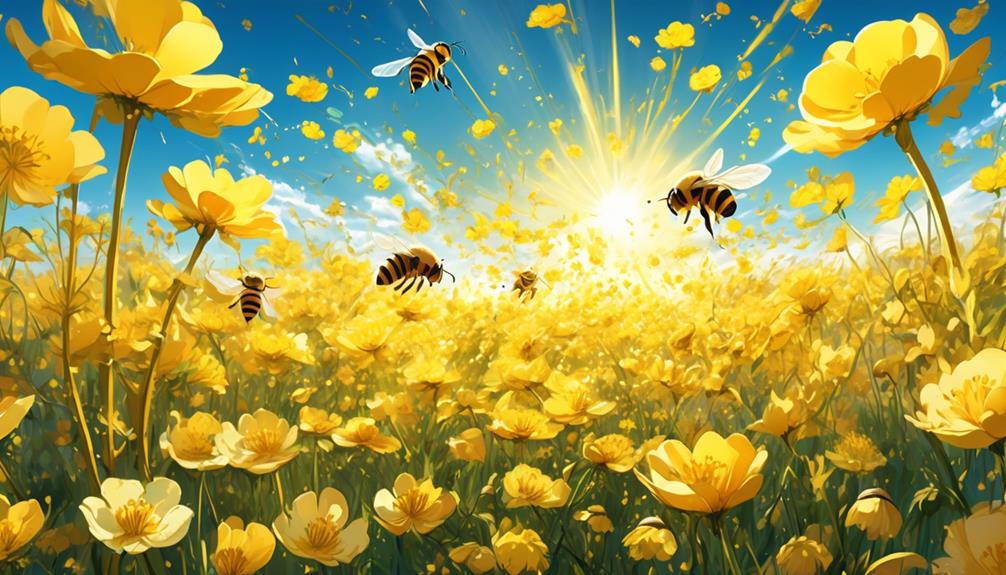
Often, you'll find bees buzzing around buttercups, drawn by their radiant yellow color, distinctive fragrance, and plentiful, sweet nectar. This isn't a coincidence. Buttercups, specifically the Ranunculus species, have evolved to become particularly enticing to bees. Their bright yellow petals act as a visual beacon, visible to bees even from a distance.
Scientists believe that bees see colors differently than humans. They're drawn to the ultraviolet spectrum, which buttercups reflect brilliantly. This makes buttercups stand out in a sea of green foliage.
Then there's the fragrance. Buttercups emit a unique scent that's irresistible to bees. It's a cocktail of chemical compounds that bees can detect from afar. This olfactory signal directs them straight to the flower's stash of nectar.
And let's not forget about the nectar itself. Buttercups produce an ample amount of this sweet substance, serving as a high-energy food source for the bees. The nectar's sugar content is just right for bees' dietary needs.
In exchange for the nectar, bees aid in the pollination of buttercups, ensuring their survival and proliferation. It's a relationship that's as symbiotic as it's fascinating.
Buttercups and Bee's Pollination Process
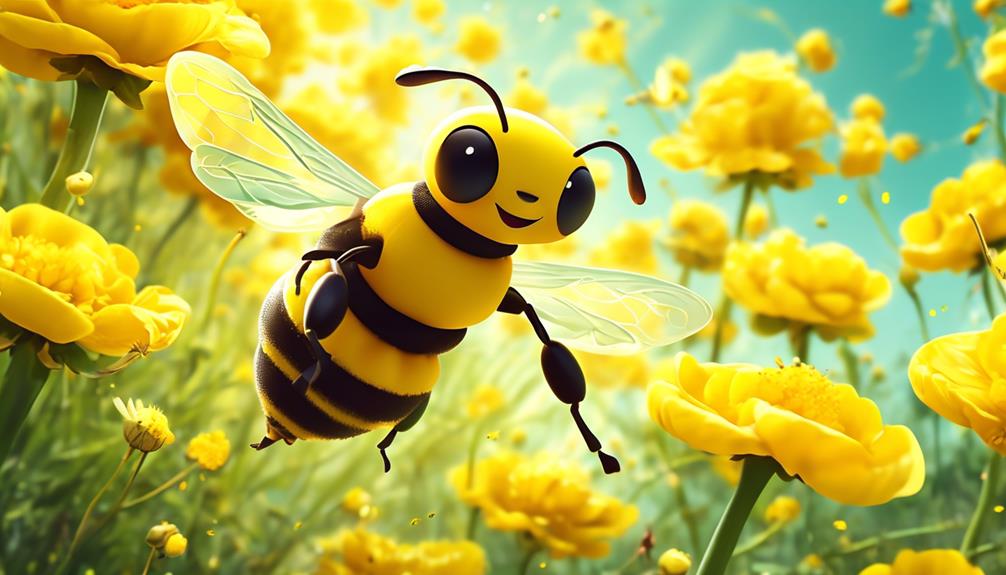
Delving into the intricacies of the bee's pollination process, you'll find that their interaction with buttercups is a key component of this fascinating ecological cycle. The bees are attracted to the buttercups' bright yellow petals, which are a visual beacon in the landscape. As they land, they're met with a generous dusting of pollen, which clings to their fuzzy bodies.
You may ask why this matters. Well, every time a bee visits another buttercup, they inadvertently deposit some of this pollen, thus fertilizing the flower and enabling it to produce seeds. This process, known as cross-pollination, is critical for the genetic diversity and survival of many plant species.
But the bees don't just act as pollen couriers. They also benefit from this relationship by feeding on the nectar that buttercups produce. This sweet substance provides the energy bees need for their strenuous work.
Science Behind Bees and Buttercups
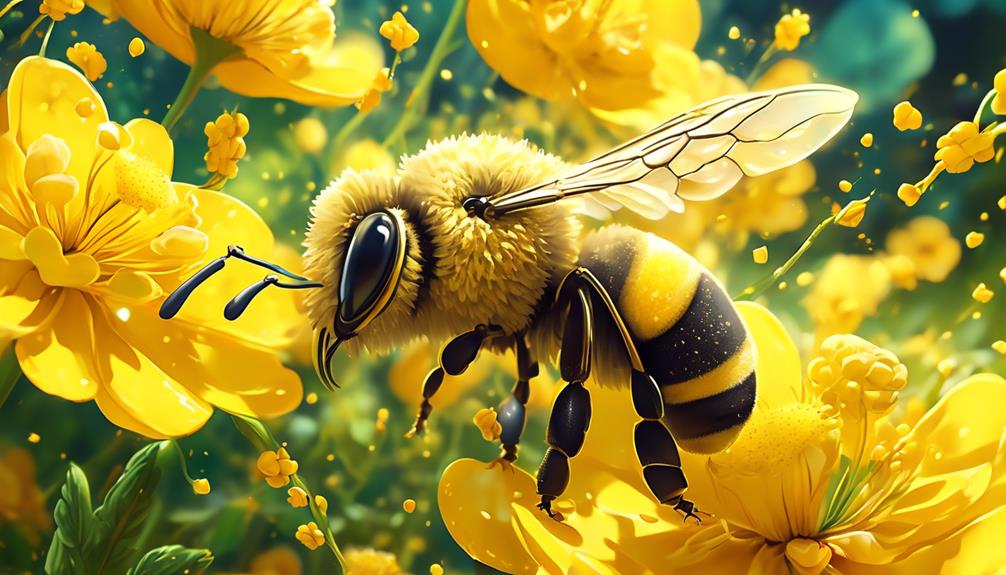
Diving into the science behind the relationship between bees and buttercups, you'll find that it's an intricately balanced system of mutual benefits. Bees are drawn to the bright yellow color and sweet nectar of buttercups. As they rummage for nectar, pollen sticks to their bodies. When they fly to the next flower, some of this pollen brushes off, pollinating the flower.
In return, the buttercup gets a helping hand in reproduction. The bee, unwittingly acting as a courier, ensures the flower's genetic material is spread far and wide. This symbiotic relationship is a cornerstone of our ecosystem.
Now, let's look at this relationship in a more detailed manner:
Bees' Benefit | Buttercups' Benefit |
|---|---|
Access to nectar (food source) | Pollination (reproduction) |
Shelter from predators (in the petals) | Genetic diversification |
Pollen for honey production | Increased chances of survival |
Scientifically speaking, this relationship is a perfect example of mutualism, where both parties gain advantages. You can see, it's not just a simple question of 'Do bees like buttercups?' It's about how nature has intricately woven this relationship to aid survival and maintain ecological balance.
Impact on Bee's Health and Behavior
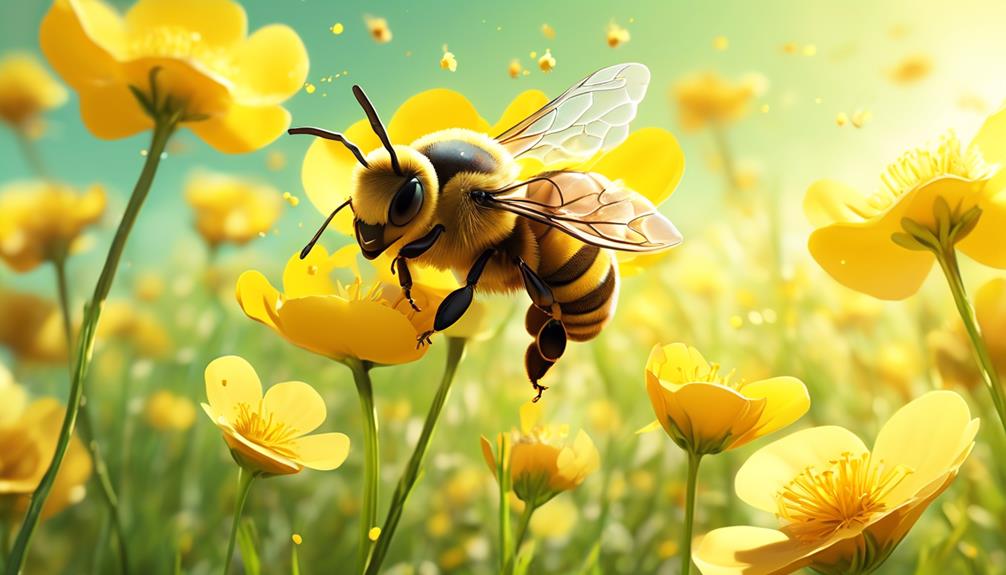
In examining the impact of buttercups on bees' health and behavior, it's important to note that their interactions provide more than just sustenance, but also influence the bees' daily routines and overall well-being. Buttercups are a rich source of nectar and pollen, which are essential for the bees' nutrition and productivity.
Observations show that bees frequenting buttercup fields display increased activity. This is due to the rich nectar content of the buttercups that boosts the bees' energy levels, thereby enhancing their foraging efficiency and honey production.
However, it's not all rosy. Some studies suggest that the buttercup's pollen may have potential negative effects. The pollen is slightly toxic, and when ingested in large quantities, it may cause mild digestive issues in bees.
On a behavior level, bees seem to show a certain level of preference for buttercups over other flowers. This preference could potentially disrupt the balance of their diet if other nutrient-rich flowers are overlooked.
The Bigger Ecological Picture
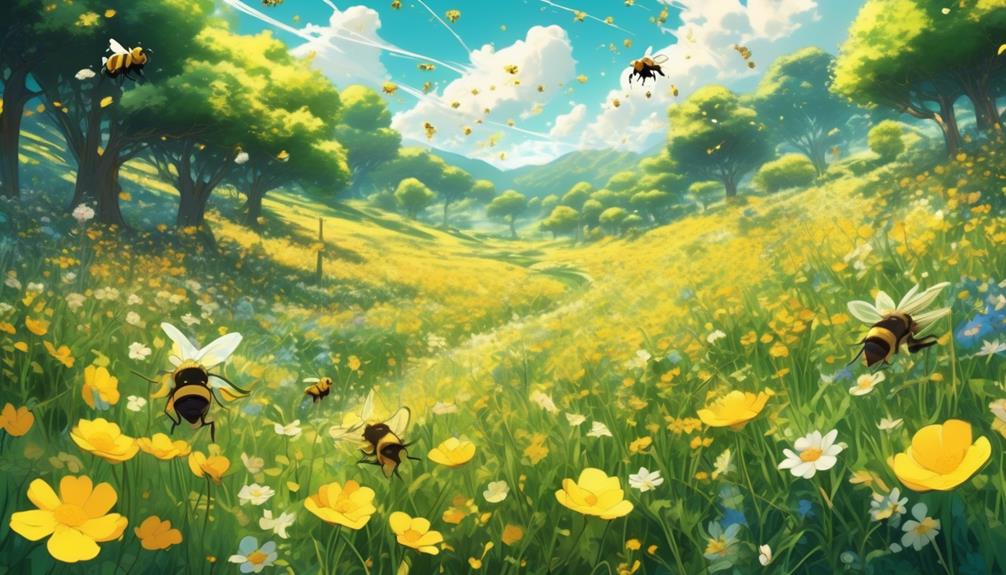
While you're considering the nuanced relationship between bees and buttercups, don't overlook the broader ecological implications of this interaction. These small-scale interactions can have large-scale effects on the ecosystem.
Bees, as you may know, are pivotal pollinators in nearly every ecosystem they inhabit. They help to fertilize flowers by transferring pollen from the male parts of a flower to the female parts. This process of pollination leads to the production of fruit and seeds, which are vital for the reproduction of many plant species. Buttercups, in turn, provide an important food source for bees through nectar and pollen.
Their symbiotic relationship contributes significantly to biodiversity. Various species of plants depend on bees for reproduction, and these plants provide habitats and food for countless animal species. If bees favor buttercups, it can lead to an increase in buttercup populations, which, in turn, can affect the distribution and abundance of other plant and animal species in the ecosystem.
Therefore, understanding the relationship between bees and buttercups isn't just about these two species—it's about understanding and preserving our larger ecological system. It's about seeing the bigger picture in the delicate balance of nature.
Frequently Asked Questions
What Other Flowers Do Bees Prefer Apart From Buttercups?
You're curious about what flowers bees prefer, aren't you?
Well, apart from buttercups, bees are quite partial to a variety of flowers. They're particularly drawn to lavender, daisies, and sunflowers. In fact, any brightly-colored flower with a sweet scent is likely to attract them.
Are There Any Specific Species of Bees That Are More Attracted to Buttercups?
You're curious if certain bee species prefer buttercups? Well, it's not so straightforward.
All bees can be attracted to buttercups, but the degree of attraction varies. For instance, honeybees and bumblebees are often seen buzzing around buttercups. They're drawn to the nectar and pollen offered by these flowers.
However, keep in mind that bees' preferences can change based on available resources and the specific needs of their colony.
How Does the Weather or Season Affect Bees' Attraction to Buttercups?
In different weather conditions and seasons, your bees' attraction to buttercups can vary.
In warmer seasons, they're more attracted because buttercups bloom then, providing nectar.
During colder times, the attraction lessens as buttercups aren't blooming.
Rainy weather also impacts bees' ability to forage for nectar.
Are There Any Specific Geographical Regions Where Bees Are More Likely to Be Attracted to Buttercups?
You're asking about the geographical regions where bees might favor buttercups. It's not about a specific region per se, but more about the habitat.
Bees tend to be attracted to buttercups in areas with temperate climates and meadows. They're also common in woodland clearings and along streams.
Does the Size or Color of the Buttercup Affect Its Attractiveness to Bees?
Yes, both size and color of buttercups can affect their attractiveness to bees. You'll find that bees are typically more drawn to larger and brighter flowers. This is because they're easily visible and often contain more nectar.
However, it's important to note that different species of bees might have varying preferences. So, it's not a one-size-fits-all scenario. The best way to know is by observing your local bee population and their behaviors.
Conclusion
So, do bees like buttercups? Absolutely! They're drawn to them due to their bright color and nectar supply. Buttercups aid in the bee's pollination process, contributing to our ecosystem.
However, it's worth noting, the relationship isn't all rosy. Some studies suggest buttercups might affect bee's behavior and health.
As nature's delicate balance unfolds, it's fascinating to observe how even the smallest interactions like these can impact the bigger ecological picture.

